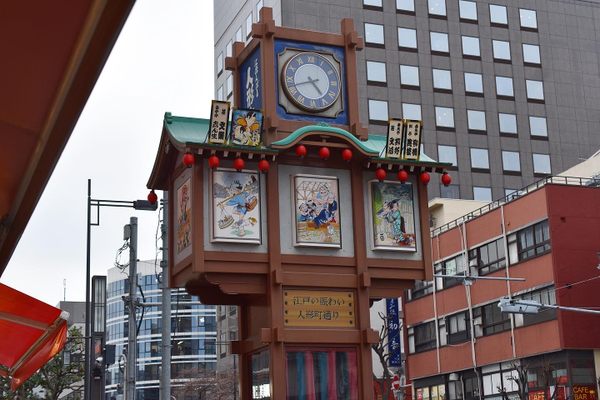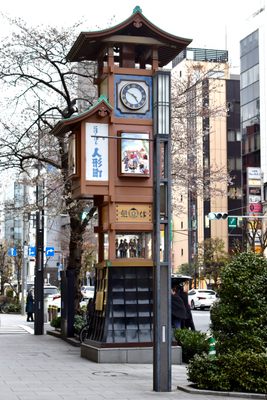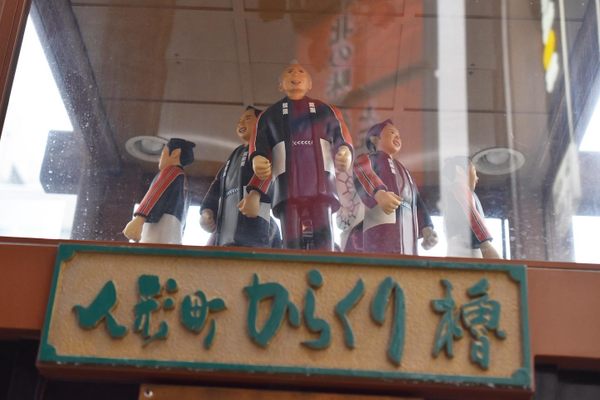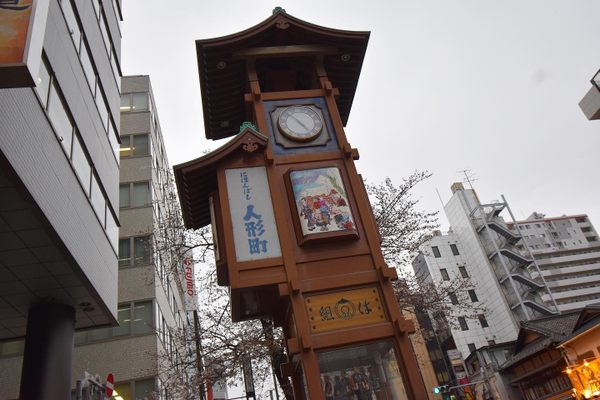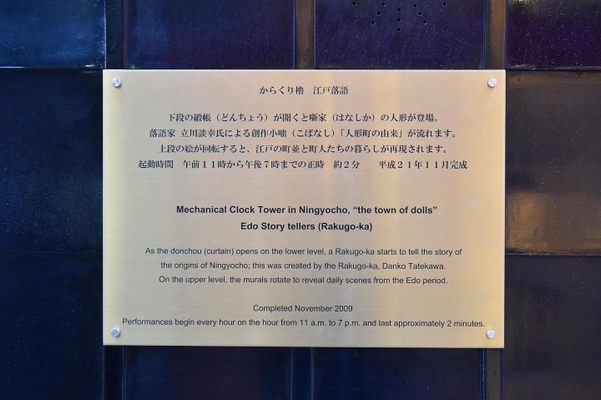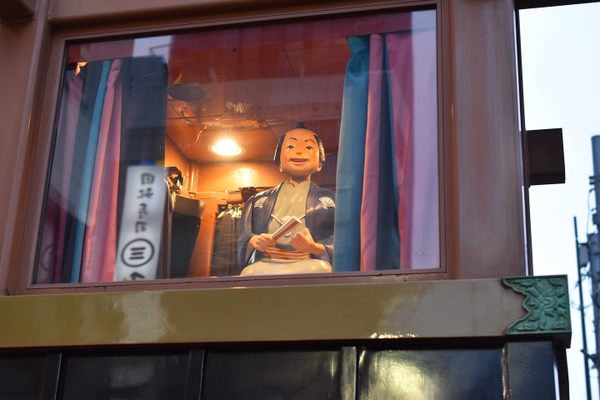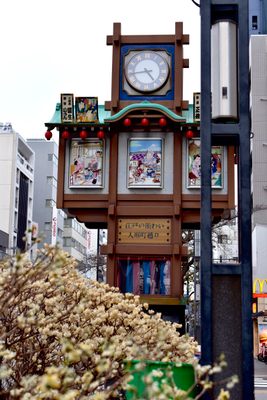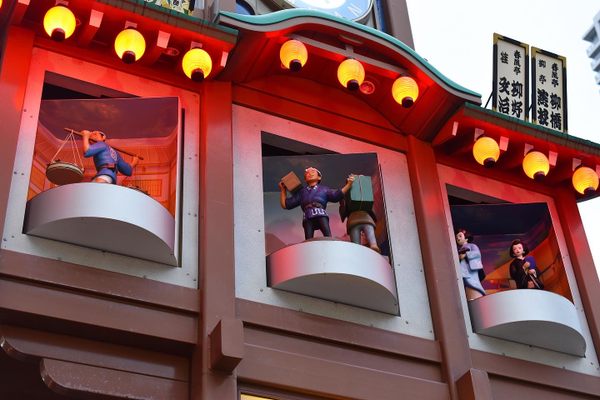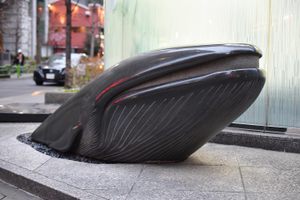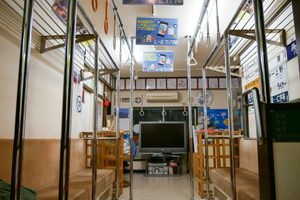About
Long before the advent of its world-leading robotics, clockwork and wind-up automata called karakuri were all the rage in Japan from the 17th-century onwards. Traditional wooden puppets on the outside, some of them could carry cups of tea to their guests or notch arrows and shoot them. Quite fond of novelty, the people of feudal Japan (especially those who could afford one) embraced them as a popular form of entertainment.
Originally called the Karakuri Yagura, the Ningyōchō Mechanical Clock Towers are a pair of often-overlooked attractions located in the historic downtown district of Ningyōchō, which was known for (and named after) its past as Tokyo's thriving center of puppetry, both theater and manufacture.
Back in feudal times, the word yagura referred to wooden watchtowers built on a castle, derived from a word meaning “arrow storehouse.” In the world of performing arts, yagura is an elevated scaffold built atop the entrance of a kabuki or bunraku theater, from which drummers drew people’s attention.
The Karakuri Yagura is not much of an attraction that will stop visitors in their tracks, considering such period-style monuments are not uncommon in the area. Ostensibly, they are nothing more than clock towers with cartoonish illustrations of town life in the Edo period on them. But every hour, it commences an animatronic show right in line with Ningyōchō’s historic heritage.
When the clock strikes the right time, curtains draw open to reveal a puppet of a rakugo-ka, a traditional storyteller-comedian seated on a cushion. For the next two minutes, he narrates the story of how Ningyōchō got its name in a humorous manner, voiced by modern rakugo-ka Danko Tatekawa. Meanwhile, above the talking animatronic, little windows open to show figurine versions of the illustrations, depicting the townsfolk of Edo, including a carpenter, fishmonger, samurai, and geishas.
The other clock tower, located closer to the station, depicts typical firefighters of Tokyo in the 18th-19th-centuries. Less animated than its twin, the firefighter puppets are on display at all times and show little movement even at the right hour, except for some swinging motions while a recording of the kiyari-uta, folk ceremonial song once sung by lumberjacks, woodworkers, carpenters, and firefighters, plays.
Related Tags
Know Before You Go
The firefighter clock tower can be found near Ningyōchō station, located across from the historic Amazake-yokochō Street, while the rakugo-ka clock tower is closer to Suitengū-mae station, particularly to Exit 7. The two are located only a minute apart, give or take. The animatronic show takes place every hour from 11 am to 7 pm.
Hidden Japan: Sado Island, Nara & Kyoto
Explore a different side of Japan.
Book NowCommunity Contributors
Added By
Published
May 17, 2022
